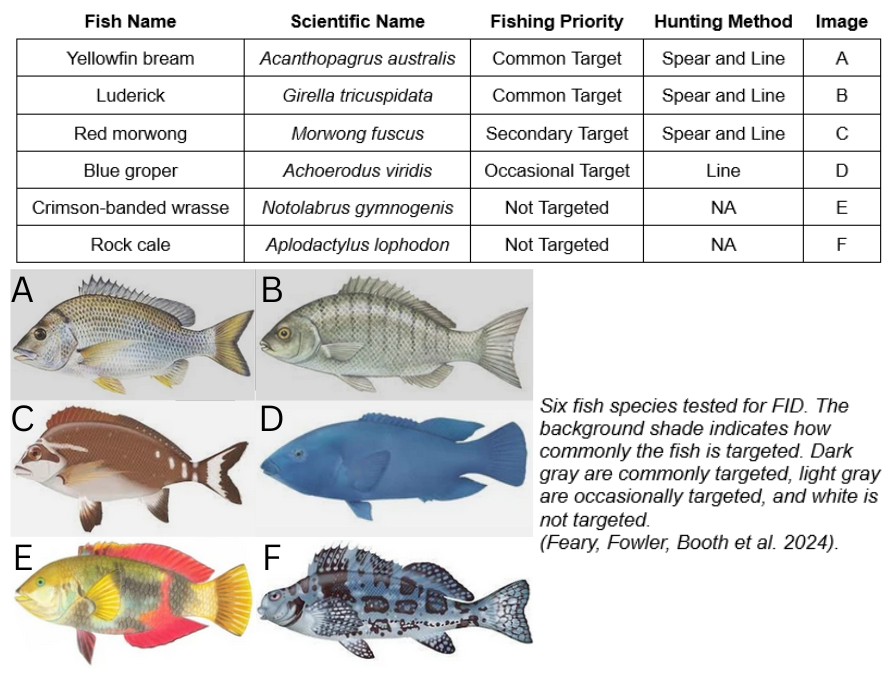[ad_1]
Feary, D.A., Fowler, A.M. & Booth, D.J. Predator-avoidance behaviour of target and non-target temperate reef fishes is lower in areas protected from fishing. Mar Biol 171, 66 (2024). https://doi.org/10.1007/s00227-023-04382-2
Predator and Prey
Flight-initiation distance, or FID, measures how close a predator can get to a prey animal before it flees. This behavior is influenced by predation risk not only from natural predators but humans as well. Human hunting, whether lethal or nonlethal, is starting to be recognized as a strong influencer of FID in land animals such as hoofed species like white-tail deer.
This influence in the marine environment is not as well understood, but initial studies suggest similar responses in fish. Feary, Fowler, and Booth (2024) investigated FID response in fish between fished areas and protected areas. They hypothesized that fish exposed to direct and indirect recreational fishing (spearfishing and angling) would show a higher FID compared to fish in protected areas.
Taking Flight
Six species of fish were measured for flight-initiation distance in New South Wales, Australia. Each represents different levels of targeting by recreational fishers and hunting methods used.
All six species displayed higher FID in fished areas compared to protected areas. The two commonly targeted fish (yellowfin bream and luderick) had the greatest difference with their FID over 2 times higher in fished areas. On the other hand, the non-targeted fish (crimson-banded wrasse and rock cale) FID was only 1.5 times higher in fished areas. Body size was also found to influence FID in each species except luderick. As body size increased, FID increased.

Learned Behavior
No matter the level of targeting or type of hunting method, all fish in the study had a higher flight-initiation distance in fished areas than in protected areas. Fish commonly targeted can develop higher FID from direct interactions with human predation in ‘near misses’ from a spear or line. However, non-targeted species won’t experience these ‘near misses’ and so must learn the behavior from these targeted species.
Social transference of behavior in fish is relatively common. This helps identify novel predators and spread this information quickly to naive individuals. However, this quick learning may be detrimental to the overall health of a species, especially those that are not targeted. The learned FID behavior gives the illusion of greater risk when in reality individuals are relatively safe. This can disrupt key survival behaviors like feeding and reproducing.
Future studies should continue to assess this behavior change to understand the full implications increased FID have on fish. If it is negatively impacting the population health, there should be a reassessment of sustainable fishing practices to account for these impacts.
Cover photo by Thirdman
I am a recent MSc graduate in marine biology from Bangor University, where I studied population dynamics of elasmobranchs off the coast of Wales. My interests lie in ecological data analysis to understand environmental processes and identify natural patterns. However, nothing beats being in the field and interacting directly with the marine life.
[ad_2]
Source link

